Laptop Mag Verdict
AT&T's MiFi Liberate is the first mobile hotspot to sport a touchscreen interface, but its impressive battery life is the real star of the show.
Pros
- +
First hotspot with a touchscreen display
- +
Easy-to-use interface
- +
All-day battery life
- +
Very good overall 4G LTE performance
- +
Can stream media from microSD card
Cons
- -
Larger footprint than other hotspots
- -
Requires shared data plan
Why you can trust Laptop Mag
Portable hotspots are utilitarian by nature. Their sole purpose is get you online and deliver fast speeds to your notebook, tablet or other Wi-Fi device. Well, now they've evolved way beyond mere wireless hockey pucks. Enter the $49.99 AT&T MiFi Liberate by Novatel Wireless. Sporting a full color touch screen display and an intuitive interface, the Liberate looks more like a smartphone than a hotspot. But that's not the only reason the Liberate is a winner. Read on to see why this is the hottest hotspot on AT&T's 4G LTE network.
Design
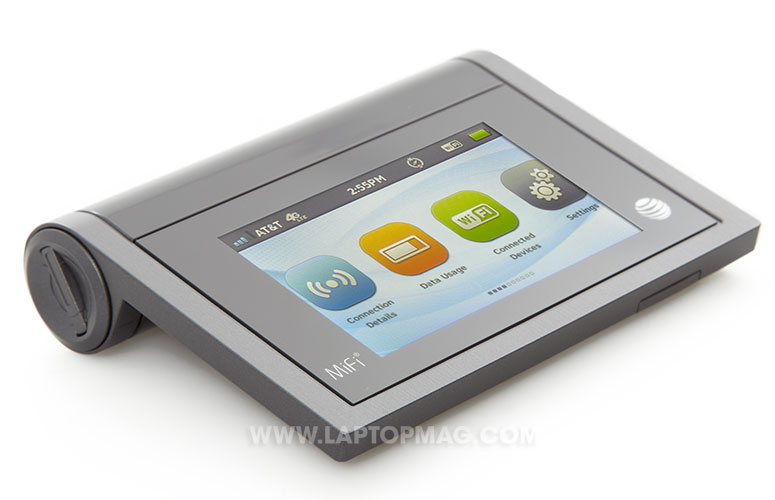
Click to EnlargeFor a hotspot, the Liberate is surprisingly attractive. Its face features a 2.8-inch color touch screen that's surrounded by a black glossy bezel that wraps its way around the hotspot's back. The remainder of the Liberate's body has a sturdy graphite chassis. The rear of the hotspot has a large bulge about the size of a roll of pennies where the Liberate's 2,900 mAh battery resides.
The front edge of the hotspot features a microSD card slot and port cover. On the right side is a microUSB port, while the left side houses the hotspot's power button. Pop off the Liberate's battery cover (yes, the battery is removable) to easily access the hotspot's SIM card slot.
Measuring 4.1 x 2.9 x 0.9 inches and weighing 4.3 ounces, the Liberate is both larger and heavier than your typical mobile hotsport. For instance, the Elevate 4G for AT&T measures 3.8 x 2.2 x 0.7 inches and 3.6 ounces. However, while the Liberate is large, it never felt too big to carry around. In fact, Verizon's Jetpack 890L by ZTE is wider at 3.5 inches across and a 4.8 ounces.
Interface
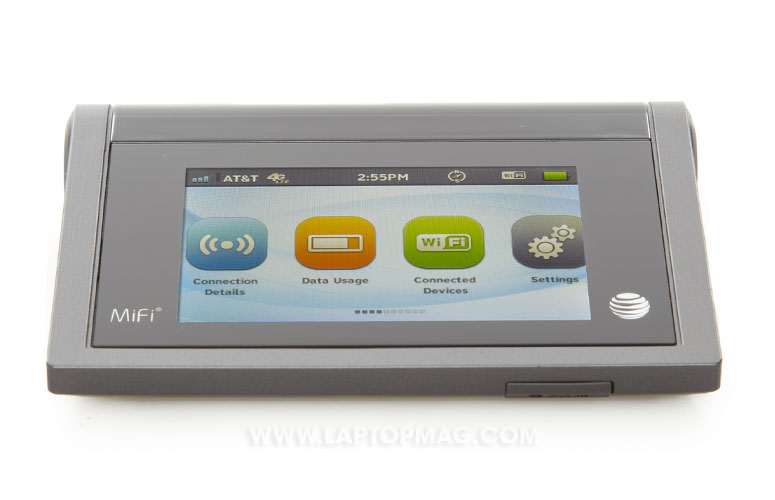
Click to EnlargeThe Liberate's standout feature is its touch screen interface, which feels more like a smartphone than a hotspot. In fact, like a smartphone, you'll have to swipe to get past the Liberate's lock screen. Once unlocked, users can swipe horizontally to access the hotspot's various features and settings. Overall, we found the touchscreen to be extremely responsive. Outdoor visibility was good when the display's brightness was set to high, but any lower was problematic.
An ever-present status bar at the top of the screen provides network status, the time, Wi-Fi status and battery level. The home screen houses 10 icons: Connection Details, Data Usage, Connected Devices, Settings, Messages, File Sharing, Media Center, GPS, Wi-Fi Protected Setup and About. Connection Details provides general information, including the hotspot's Wi-Fi password, security level and network name. Data Usage and Connected Devices menus include notes on your total data usage and number and types of devices connected to the Liberate, respectively.
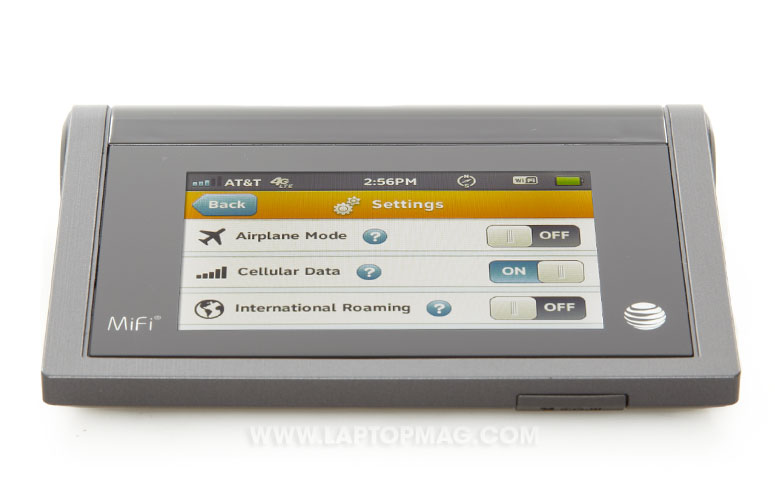
Click to EnlargeFrom the Settings menu you can change the Liberate's screen brightness, screen timeout delay, enable international roaming, cellular data and airplane mode. Messages allows users to access emails sent to their Liberate, and File Sharing lets you upload and download files from the Liberate's microSD card. Similarly, Media Center gives users the ability to stream music, movies and other media from the Liberate to any connected device either through a web browser or DLNA connection. The GPS feature allows users to share the Liberate's GPS located with other devices, while WiFi Protected Setup is for enabling or disabling WPS settings.
Navigating the Liberate's user inteface is about as straightforward as it gets. You swipe to scroll through the hotspot's various menu options and tap to open them. You can toggle settings with a single tap. Novatel Wireless deserves credit for providing brief yet descriptive notes about what each option does.
4G Coverage
AT&T's has been aggressively expanding its 4G LTE network over the past year, more than doubling its coverage from roughly 44 markets in 2011 to 88 in 2012. That's enough to get the carrier ranked in the number two spot among LTE carriers, behind Verizon, which has a whopping 440 markets. Sprint has 32 LTE markets and counting.
Features
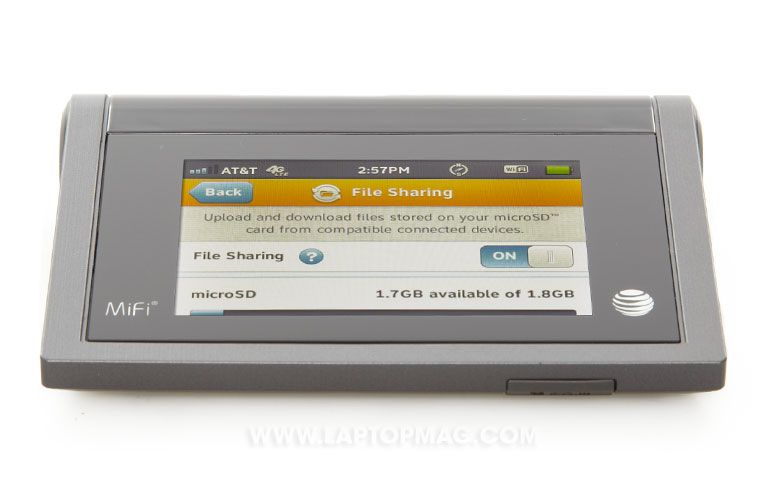
Click to EnlargeIn addition to its touchscreen, the Liberate allows users to stream media to DLNA-compatible devices, as well as through a web browser. We found the feature to be surprisingly easy to use. Once logged into the browser, we could quickly choose from videos, photos and music stored on the hotspot's microSD card and immediately stream them to our notebook. A web portal lets us customize the Liberate's various security and network settings. You can also map your location using the built-in GPS, receive messages and connect up to 10 different devices.
Performance
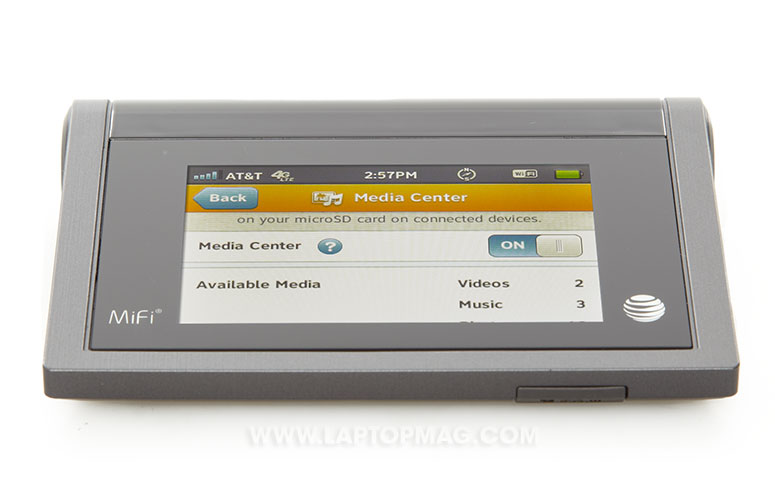
Click to EnlargeWe tested the Liberate's performance in three locations: outside our office at Fifth Avenue and 20th Street in New York City, nearby in Union Square, and in Central New Jersey. AT&T says its LTE network should offer download speeds as fast as 20 Mbps and uploads as quick as 7 Mbps.
In our two New York locations, we saw average download speeds of roughly 5.9 Mbps and uploads of 4.7 Mbps using Speedtest.net. By comparison, AT&T's other hotspot, the Elevate 4G LTE, averaged download speeds of 6.7 Mbps and upload speeds of 3.1 Mbps.
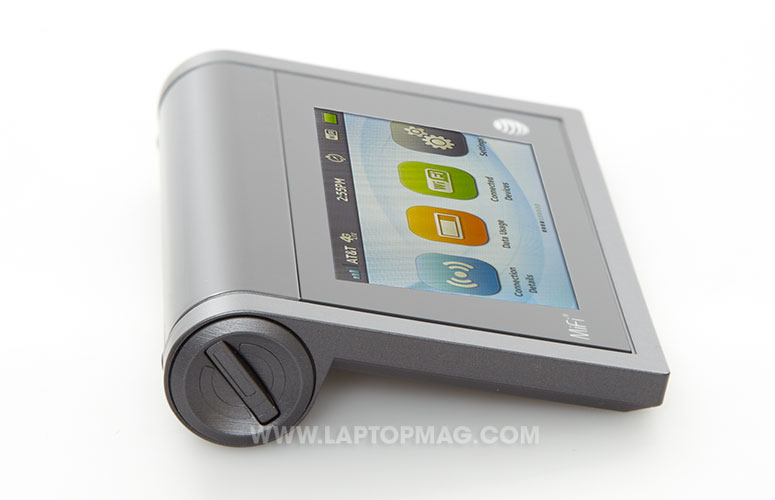
Click to EnlargeThe Liberate's download speeds were far faster in New Jersey, averaging 16.7 Mbps, while uploads were way slower, sitting at 1.7 Mbps. The Elevate 4G, however, pulled down data at a rate of 2.5 Mbps and uploaded data at 1.6 Mbps
The Liberate performed better during our stress tests, which included streaming an HD Hulu video on our laptop while measuring the hotspot's download and uploads speeds on a separate device. In New York, download speeds averaged 8.2 Mbps, while uploads averaged 5.1 Mbps. In New Jersey, downloads averaged 9.4 Mbps, while uploads averaged 2.4 Mbps.
The Elevate, meanwhile, saw average download speeds of 7.7 Mbps and uploads of 7.8 Mbps. In New Jersey, the Elevate averaged 18.9 Mbps down and 1.3 Mbps up.
One thing we noted during our speed tests was that both hotspots would occasionally hit speed walls, with downloads and uploads hovering around the 1 Mbps mark. These problems were remedied, however, with a quick restart.
Large File Downloads
Downloading the 145MB OpenOffice install file took an average of 16 minutes on the Liberate while in New York, and 8 minutes in New Jersey. The Elevate, meanwhile, was quicker to download files in New York (10 minutes), but was disappointingly slow in New Jersey, where it took 23 minutes to download OpenOffice.
Web Surfing
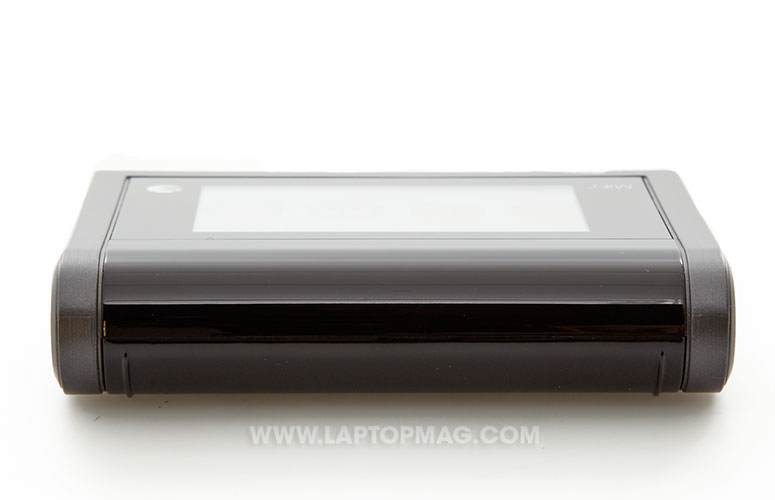
Click to EnlargeDespite the Liberate's up-and-down throughput in different locations, web page load times were consistent throughout our tests. CNN.com loaded in an average of 4.7 seconds in New York and 2.6 seconds in New Jersey, while NBCNews.com loaded in 7.6 seconds in New York and 13.8 seconds in Jersey. The very light Bing, as expected, loaded in 1.0 second in New York and 0.47 seconds in Jersey. The image-heavy Laptopmag.com took 7.6 seconds in N.Y. and 14.6 in N.J.
AT&T's Elevate loaded CNN.com in an average of 5.5 seconds in the city and 4.1 seconds in Jersey, while NBCNews.com loaded in 3.9 seconds in New York and 2.4 in New Jersey. Bing loaded slightly faster using the Elevate, 0.8 seconds in N.Y. and 0.49 in N.J., while Laptopmag.com loaded in 14.1 seconds in New York and 2.5 seconds in New Jersey.
Battery Life
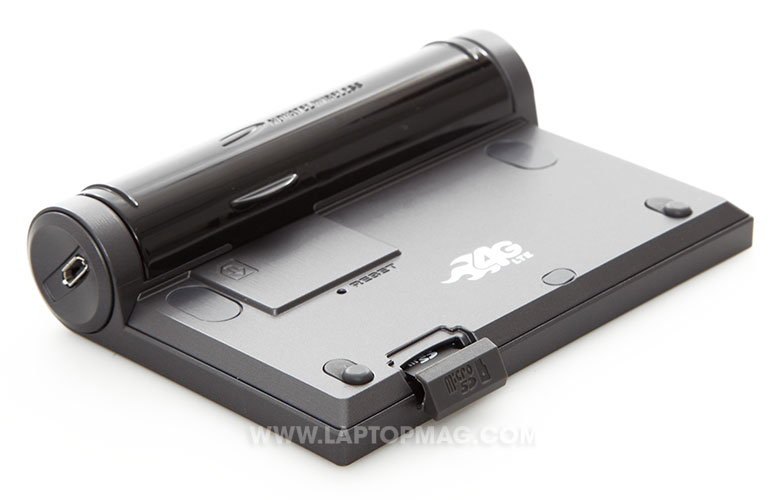
Click to EnlargeThe Liberate packs a 2,900 mAh removable battery that AT&T says can last upwards of 11 hours on a single charge. To test this claim, we connected a notebook running the LAPTOP Battery Test to the Liberate, and set the hotspot's screen to 40 percent brightness. Under these conditions, the Liberate lasted an impressive 8 hours and 26 minutes. That's way better than the 4 hours and 45 minutes we got using AT&T's Elevate hotspot. Set the Liberate's display timeout to 30 seconds and you'll be coasting on 4G LTE for much longer.
Value
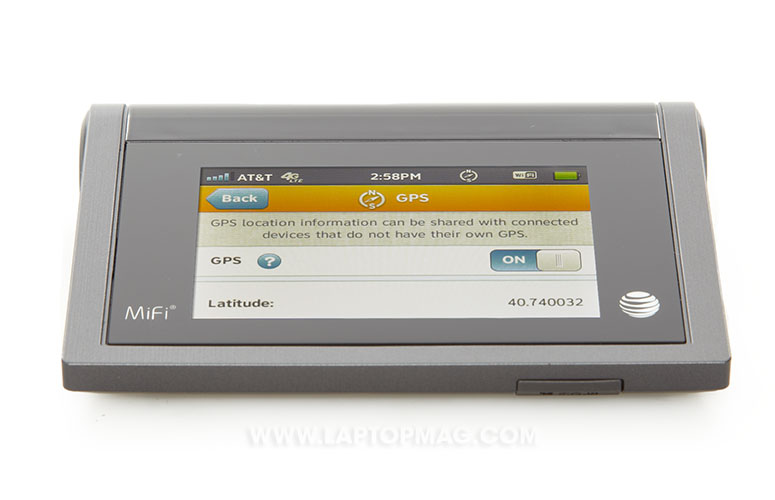
Click to EnlargeAT&T is currently selling the Liberate for $49.99 with a two-year data plan on contract. If you sign up for a 4GB per month shared data plan, you can expect to pay $70 a month for the data plan and a $20 monthly service charge. Over the course of a two-year contract, that $90 per month will add up to $2,160. Throw in the $49.99 for the hotspot, and the Liberate will cost you $2,209.
The Elevate, on the other hand, is currently priced at $0.99 with a two-year data plan. With the same 4GB two-year data plan, the Elevate will cost about $2,161.
Unfortunately, AT&T doesn't allow users to purchase individual data plans, but instead requires you to purchase a shared data plan. Instead, you can opt for a Data Device Plan, which gives you 5GB of 4G LTE data for $50 a month. Go over your data alottment and you'll end up paying an additional $10 per 1GB.
Verdict

Click to EnlargeIf you're an AT&T subscriber and you're looking for a mobile hotspot, the MiFi Liberate is your best bet. The touch screen interface seems gimmicky at first, but it makes this device very easy to use. More importantly, this hotspot lasts well over 8 hours on a charge, making it a great partner for everything from your notebook to a Wi-Fi only iPad. While you'll pay $50 more for the Liberate over the Elevate, this MiFi's more robust feature set and longer endurance make it well worth the premium.
AT&T MiFi Liberate Specs
| Company Website | www.att.com |
| Data Connection | HSPA+, GPRS, EDGE, 4G, LTE |
| Ports | microUSB |
| Security Features | VPN pass-through, Wi-Fi Protected Setup, NAT Firewall, anti CSRF, session timeout, block retry attempts, administrative password. |
| Size | 4.05 x 2.88 x 0.34 inches |
| Supported Protocols | 802.11b/g/n |
| VPN Support | VPN capability |
| Weight | 4.26 ounces |
| Wireless Bands | 2.4 GHz |
